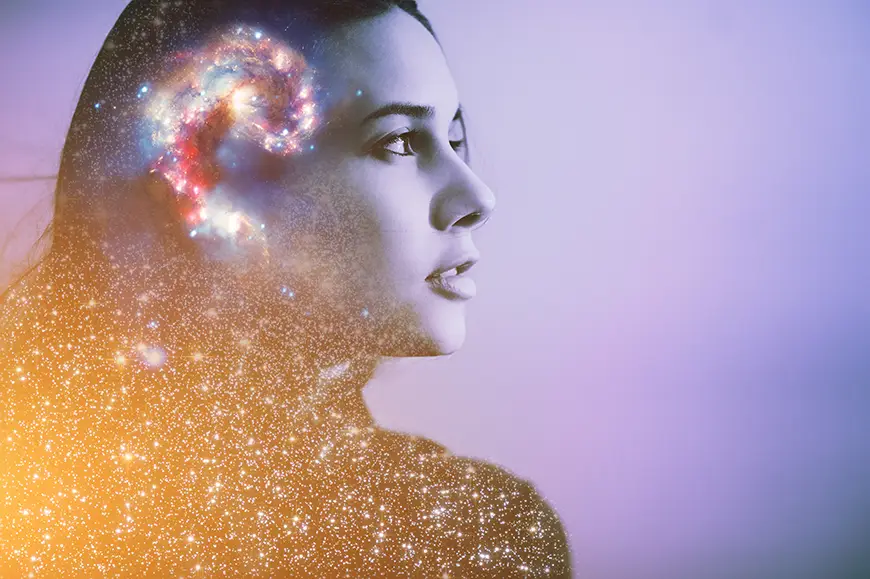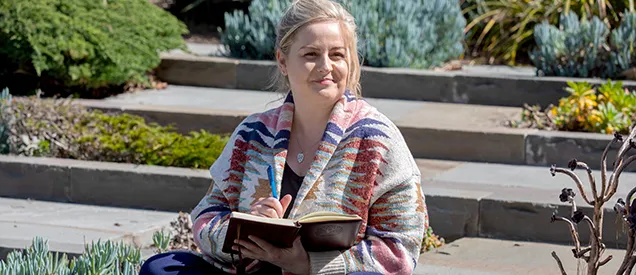Psychology•July 20, 2023
Understanding the Mystery of Collective Consciousness
The intricate labyrinth that is the human psyche has been a topic of fascination for many great thinkers, drawing the attention of figures such as Sigmund Freud and Carl Jung.
Both sought to map out the territories of the mind, but it was Carl Jung who delved into a realm that transcends personal experience. At the crossroads between individuality and universality, the collective unconscious emerges.
Embark with us as we navigate the profound waters of the "collective unconscious," unveiling its scientific support and its profound resonance with many people.

In the tapestry of collective consciousness, we weave our individual stories into a greater narrative of unity.
What is the collective consciousness theory?
What is Durkheim's theory of collective consciousness?
Émile Durkheim, a pioneering figure in sociology, coined the French term "conscience collective." His idea of collective consciousness refers to beliefs and sentiments common to average members of society, forming a determinate system that has its own life. According to Durkheim, this system could be investigated using the sociological method, and it sheds light on how societies maintain cohesion and solidarity.
What did Carl Jung mean by collective consciousness?
Carl Jung, the pioneering Swiss psychiatrist and psychoanalyst, expanded upon prevailing notions of shared human experience. While earlier thinkers like Durkheim had raised the subject of this "collective consciousness" — a shared set of beliefs, values, and societal norms that bind communities together, Jung ventured deeper.
He introduced a distinction between the personal unconscious - a reservoir of each individual's memories and experiences, and the collective unconscious - a more profound layer teeming with archetypes.
These archetypes, such as The Hero, The Mother, or The Shadow, are universal symbols and patterns that resonate across cultures and eras, deeply embedded in our shared human experience. They surface in dreams, myths, and artistic expressions, revealing shared psychic structures that shape the perceptions of all humans.
This is where the distinction and interplay between "collective consciousness" and "collective unconscious" become crucial.
Durkheim's collective consciousness captures the conscious agreements that make societal cohesion possible — the realm of shared traditions, laws, and cultural norms.
Building upon this understanding, Jung proposed that the collective unconscious lies beneath this layer of shared consciousness. This realm is not about societal agreements but taps into innate, universal symbols and themes that inform societal structures and animate our dreams, stories, and behaviors. In this context, the collective unconscious is a bedrock of the human psyche, highlighting a universality that surpasses temporal, cultural, and individual boundaries.
Is the collective unconscious real?
The empirical path to proving Jung’s collective unconscious is a complex journey, threading its way through diverse fields of study.
Jung's exploration into the collective unconscious pointed towards shared archetypal symbols inherent within the human psyche. This notion is supported by various spiritual traditions, from the Hindu Kecak chanters of Indonesia to the 'gathered' meetings of American Quakers.
Similarly, studies have highlighted instances of collective consciousness during advanced states of group meditation and within oral cultures, such as the Australian Aborigines and the San people of Africa.
From the perspective of natural sciences, our current understanding seems to fall short in explaining these phenomena. But there is no shortage of theories.
Insights into the evolution of human communication reveal fascinating discoveries, such as mirror neurons, which respond to intentions and emotions. There is speculation that these neurons could be central in fostering collective experiences, playing a significant role in the emergence of language and reflective self-consciousness.
What are examples of the collective consciousness?
- Archetypes: Archetypes like “the Mother,” “the Hero,” or “the Shadow” are present across cultures and eras. These serve as windows into our shared psychic space.
- Dreams: Common dream themes, from flights to pursuits, can be perceived as ripples from our collective unconscious, transcending personal experience.
- Myths and Legends: Age-old tales, whether of heroes or mystical creatures, have sprung up with similar themes across many cultures, speaking to a shared human narrative.
- Symbols and Motifs: Consider the mandala – a geometric configuration of symbols – that appears in spiritual practices from Tibetan Buddhism and in Native American traditions. Or the ubiquitous symbol of the serpent, which has been interpreted as everything from a harbinger of danger to a symbol of knowledge and rebirth. These recurring symbols, though expressed differently, imply a shared pool of thought.
- Rites and Rituals: The practices surrounding life and death, marriage, and passage into adulthood are remarkably similar across distant cultures. While the specifics vary – a Bar Mitzvah, a Quinceañera, or a tribal initiation rite – the essence remains intact. This is a universal nod to the significant phases in human life.
- Art and Expression: Cave paintings, from the renowned Lascaux in France to the Bhimbetka shelters in India showcase an uncanny similarity. Whether portraying the hunt, dance, or mere existence, these prehistoric remnants bear testimony to a shared aesthetic instinct and an innate urge to document our experiences.
- Moral Codes and Ethics: While laws and guidelines vary from culture to culture, fundamental principles, such as those surrounding murder, theft, and honesty, remain strikingly consistent. These shared ethical compasses suggest a deeply embedded collective understanding of right and wrong.
- The Dance of Nature: From the ancient Celts celebrating the solstice to Native American rain dances, the collective unconscious reveals itself in humanity's shared reverence of nature. These practices imply that, as a species, we are intrinsically connected to the world around us, celebrating its beauty, power, and mystery.
The takeaway

The realm of collective consciousness draws attention to the intricate psychological webs that unify us, even when faced with our distinct differences.
In the grand tapestry of humanity, the concept of collective consciousness serves as a gentle reminder that, beyond our cultural and experiential divides, we are united by an undercurrent of shared beliefs, sentiments, and archetypes.
"In all chaos, there is a cosmos, in all disorder a secret order." - Carl Jung.
Here at Meridian University, we encourage our students to deeply investigate the nature of the psyche. Our Psychology Program is designed to give you the tools to explore intimidating concepts such as collective consciousness and to recognize its value within multiple spaces.
If you are interested in learning about the symbols, psychological structures, and archetypes foundational to the human psyche, consider speaking with an Admission Advisor to learn more about our programs.
References:
- Smith, K. (2014). Emile Durkheim and the collective consciousness of society: a study in criminology. Anthem Press.
- Stevens, A. (2001). Jung: A Very Short Introduction. Oxford University Press.
- Combs, A., & Kripner, S. (2008). Collective consciousness and the social brain. Journal of Consciousness Studies, 15(10-11), pp. 264–276.
- Dillbeck, M.C., Cavanugh, K.L., Glenn, T., Orme-Johnson, D.W. and Mittlefehldt, V. (1987). ‘Consciousness as a field: The Transcendental Meditation and TM-Sidhi program and changes in social indicators’, Journal of Mind and Behavior, 8, pp. 67–104.
- Rizzolatti, G., Fogassi, L. and Gallese, V. (2006), ‘Mirrors in the mind’, Scientific American, 295 (5), pp. 54–61.
Learn More
Interested in learning more about the programs at Meridian?
Contact An Advisor »Attend an Info Session »



Submitting
Stay Inspired
Receive exclusive content on personal and professional transformation via email with expert insights in psychology, leadership, education, and more.
We don’t email frequently and you can always unsubscribe. By continuing, you are agreeing to Meridian’s Privacy Policy.